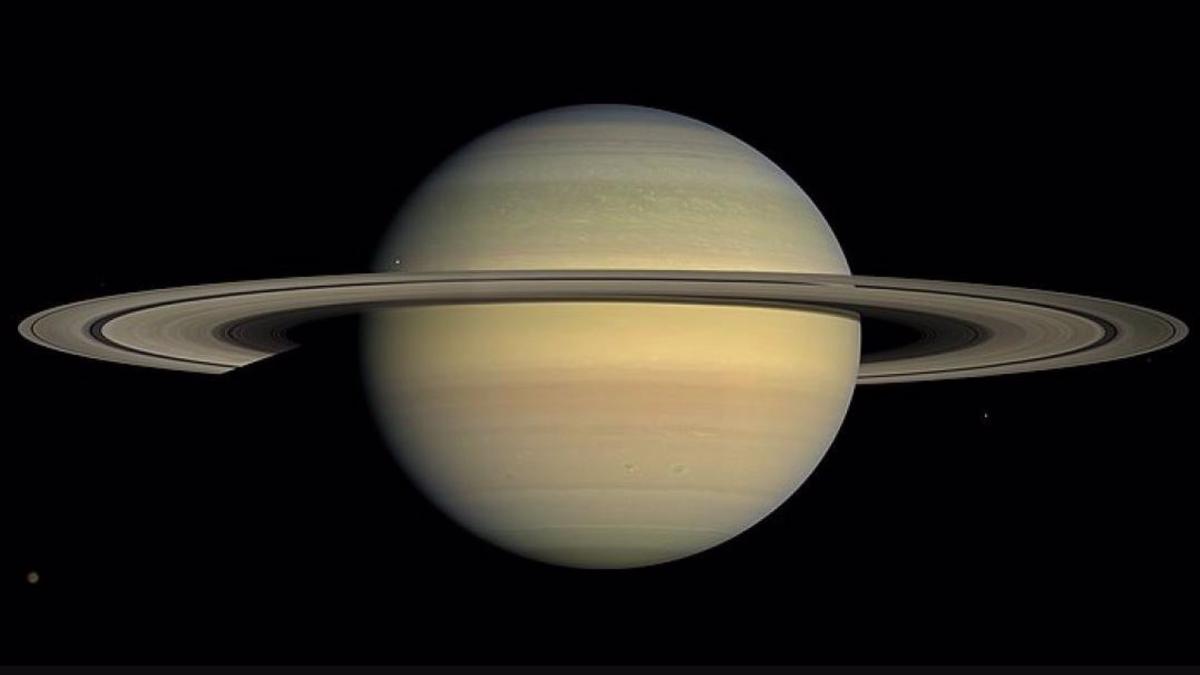The long-running search for extraterrestrial life got a major boost with a new scientific study published Wednesday in the prestigious journal Nature.
A group of scientists has discovered that phosphorus, a key ingredient for life, is present in the ocean beneath the icy surface of Enceladus, one of Saturn’s moons.
The discovery was based on a review of data collected by NASA’s Cassini spacecraft for which the public report was produced in the journal Nature.
Cassini began exploring Saturn, its rings and moons in 2004, before burning up in the gaseous layer of the giant’s atmosphere when its mission ended in 2017.
“This is an amazing finding for astrobiology,” said Christopher Glenn of the Southwest Research Institute, one of the paper’s co-authors. He added, “We found abundant amounts of phosphorus in ice samples that come out of the underground ocean.”
An unprecedented discovery
Geysers at Enceladus’ south pole spew icy particles into space through cracks in the surface, feeding Saturn’s E ring, the faint ring outside the brighter main rings.
Scientists have already found other minerals and organic compounds in the ejected ice grains, but not phosphorus, which is an essential component of DNA and RNA, and is also found in the bones and teeth of humans and animals and even in ocean plankton.
Simply put, life as we know it would not be possible without phosphorus.
While geochemical modeling has previously revealed that phosphorus may also be present, and this prediction was published in a previous paper, it is another to predict and confirm one thing, Glenn noted.
“This is the first time that this elemental element has been detected in an ocean beyond Earth,” added lead author Frank Postberg, a planetary scientist at Germany’s Freie Universitat Berlin, in a statement from NASA.
Upcoming investigations
The authors studied data collected by Cassini’s cosmic dust analyzer and confirmed the results by performing laboratory experiments to show that Enceladus’ ocean incorporated phosphorus into various water-soluble forms.
Over the past 25 years, planetary scientists have discovered that ocean worlds beneath a surface layer of ice are common in our solar system.
Among them are Europe – one of the moons of Jupiter – and Titan – the largest of Saturn’s moons – and even the most distant planet in the solar system, Pluto.
While Earth-like planets with oceans need to exist within a narrow radius of their reference star to maintain temperatures suitable for life, the discovery of worlds with subterranean oceans expands the amount of habitable space that can exist in the universe.
“With this discovery, it is now known that Enceladus’ ocean meets what are generally considered to be the most stringent requirements for life,” Glenn said.
“The next step is clear: we have to go back to Enceladus to see if the habitable ocean is really inhabited,” he stressed.

“Proud web fanatic. Subtly charming twitter geek. Reader. Internet trailblazer. Music buff.”

:quality(85)/cloudfront-us-east-1.images.arcpublishing.com/infobae/TEQF6EONZRFGLLLDIDD4L2O4EE.jpg)

:quality(75)/cloudfront-us-east-1.images.arcpublishing.com/elcomercio/XU32LRAEZFDDPNVHLFU3CKVBYY.jpg)



More Stories
How to create 3D videos with my iPhone, it will be very useful even for your business
NASA discovers an anomaly in the Earth’s magnetic field that could have serious consequences for humans
Can the Earth be divided into two parts?